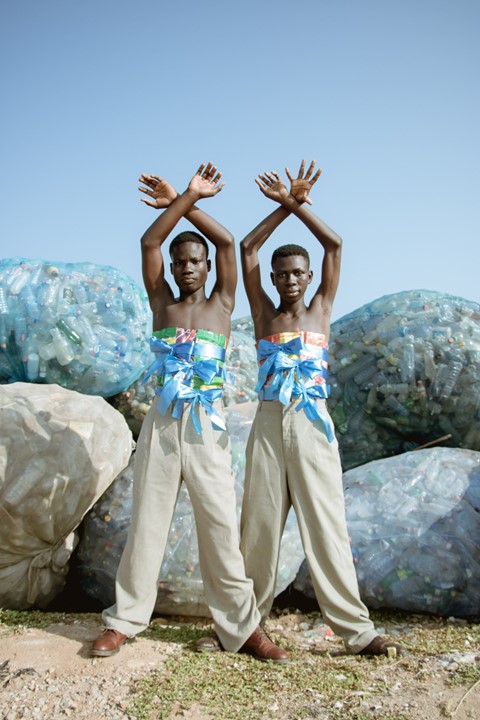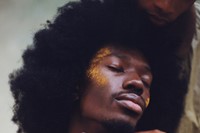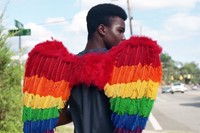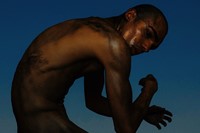We talk to Jordan Anderson, the founder of My Queer Blackness, My Black Queerness (MQBMBQ), a new photo sale and digital journal raising money for the black trans community
Last week, Milan-based writer and editor Jordan Anderson launched My Queer Blackness, My Black Queerness (MQBMBQ) alongside co-curator Chiara Nonino, a digital project which they describe as “a protest, a celebration that frames blackness as a polyphony, a genre or melody with a vast variety of notes and textures, denouncing both white queer racism and black queer antagonism by way of art, film and literature”. Comprising a print sale, which will raise money for TransWave JA and ForTheGworls, an online journal, and live screenings of the work of pioneering filmmaker Marlon Riggs, Anderson hopes that art can be used as a tool for self-reflection and reinvention, as well as a vehicle to start conversations and explore topics around identity.
At the heart of the project is the sale, which includes photographic prints from Campbell Addy, Tim Walker, David Uzochukwu, Daniel Obasi, and Justin French, among others – available to purchase in limited editions of 20 copies in two sizes at £100 or £400, or £1,000 for prints by Walker. “I’m still unlearning a lot of the myths I was taught as a child about gender, and I think this process is not only an antidote to ignorance, but it’s also important to help in understanding the way you see yourself and why you see yourself in such a light,” Anderson tells AnOther. “I wish I had known the difference between gender identity and sexuality as a teenager. Because it would have made a world of difference in how I saw myself and which parts of me I suppressed.”
Meanwhile, a digital journal on the MQBMBQ website celebrates the diversity of the black LGBTQ+ community, giving a virtual space for trans and non-binary guests to share their own stories – the ongoing project has already seen contributions from the USA, Mexico, Jamaica, and more. Anderson said part of the reason he began the project was to address the “ignorance” he saw after Black Trans Lives Matters protests in New York from both inside and outside the black community, as well as the narrative – perpetuated by the media – that the queer community consists only of white gay men. “Black queer identity and protecting black trans women is something that you can expect to see on my agenda even long after this project ends,” Anderson says.
Here, Anderson speaks on My Queer Blackness, My Black Queerness, and what’s next for him.
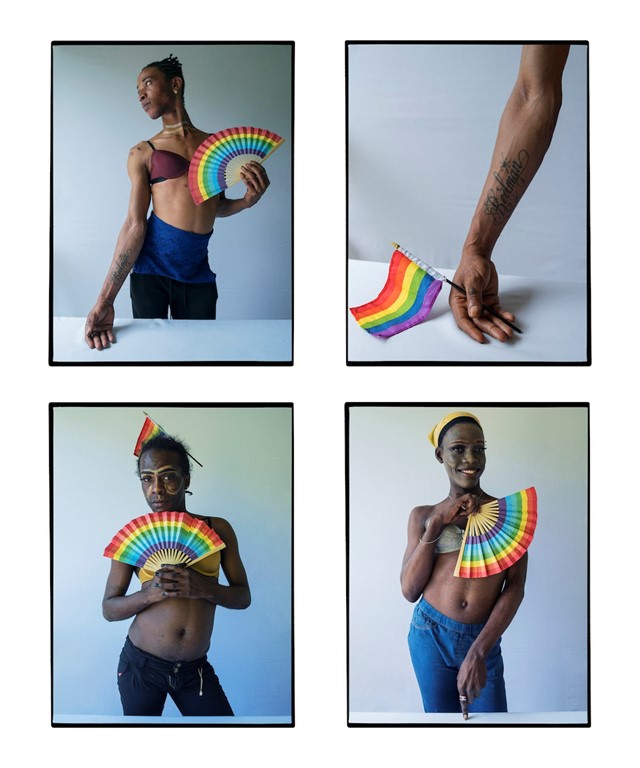
Chidozie Obasi: How did you find the development process for My Queer Blackness, My Black Queerness?
Jordan Anderson: There was a lot of work to be done. It took some time to make sure I had a solid concept, but after getting the entire team together with my co-curator Chiara Nonino, web developer Valentina Antollini and graphic designer Zina Jamil, everything was smooth sailing from there.
CO: What made you want to explore black queerness?
JA: It started from a small idea ... I noticed a lot of pride month’s events were touching on conversations on black queerness with scarcity. I just thought it wasn’t enough, so I wanted to create some sort of platform or project that speaks specifically to black queerness and black identity.
CO: In the wake of the current crisis, why do you think it’s important to shed a light on topics around queerness and blackness?
JA: It’s important in the wake of the racism crisis and Black Lives Matter movement, mainly because black queer people and especially black trans women are so often being left out of the conversation on all sides. One of the things that really pushed me to start this was after opening one of The Shade Room’s posts on the huge Black Trans Lives Matter protests in New York, and just seeing what a grand show of ignorance there was. It’s one of the saddest things to know that my skinfolk are being picky about which Black Lives movement they choose to fight for ... I really wanted to change this narrative and create a space specifically for us black queer people, with black trans women at the centre of it.
CO: Why do you think discussions about gender have become imperative in modern times, and how have they influenced you?
JA: Conversations around gender are incredibly important to have, not just with adults but with children, and with black children especially. I wish I had known the difference between gender identity and sexuality as a teenager, because it would have made a world of difference in how I saw myself and which parts of me I suppressed. I’m still unlearning a lot of the myths I was taught as a child about gender, and I think this process is not only an antidote to ignorance, but it’s also important to help in understanding the way you see yourself and why you see yourself in such a light.
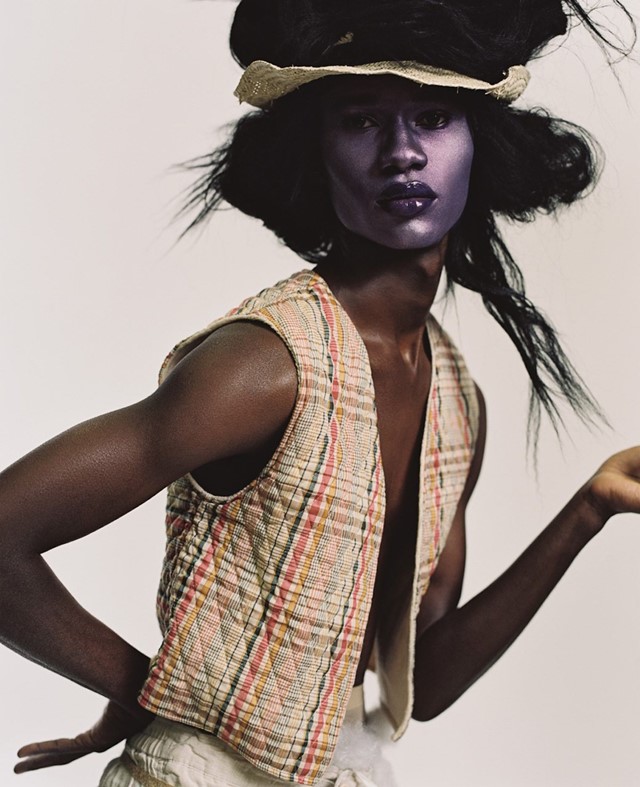
CO: You’ve celebrated queerness in the project through phenomenal collaborations with artists and photographers – how does sharing the powerful narratives of so many creatives feel?
JA: Honestly, I feel really grateful that so many creatives were willing to jump on board and show their allyship and alienation to the movement in such a beautiful way. We all gain so much inspiration from black creativity and black queer identities, so I’m happy to create this channel as a way of giving back.
CO: What if the viewer doesn’t pick up on the multiple cultural references?
JA: It’s very simple: go read a book and use Google!
CO: What kind of impact are you trying to achieve?
JA: With this project I’m coming at it from both ends. We wanted to use this platform to denounce white queer racism and anti-queer black antagonism, because as a black queer person you’re often left out in the cold when it comes to black-centred conversations, and even more so excluded when the topic’s around “the gays” – it’s more often in reference to white gay men. So, I wanted to create a space for us, without the approval of anyone else. A space where we can turn down the noise, turn up the Solange and love ourselves, and uplift black trans women.
CO: It’s 2020, and we really have seen it all. Through the fundraiser sale, what change would you like to witness?
JA: With the fundraiser sale, I’d really like to do our part in supporting these smaller organisations and communities that are way too often overlooked. What happens is a lot of the larger organisations get most of the funding that goes into complex, complicated causes and those organisations that are smaller and are directly helping the people that need help are left in the cold, so I’m really hoping that even in future endeavours, we do our research before deciding which organisations to support.
To purchase prints, participate in live screenings or read more about the project, head to mqbmbq.com or follow the project on Instagram.
